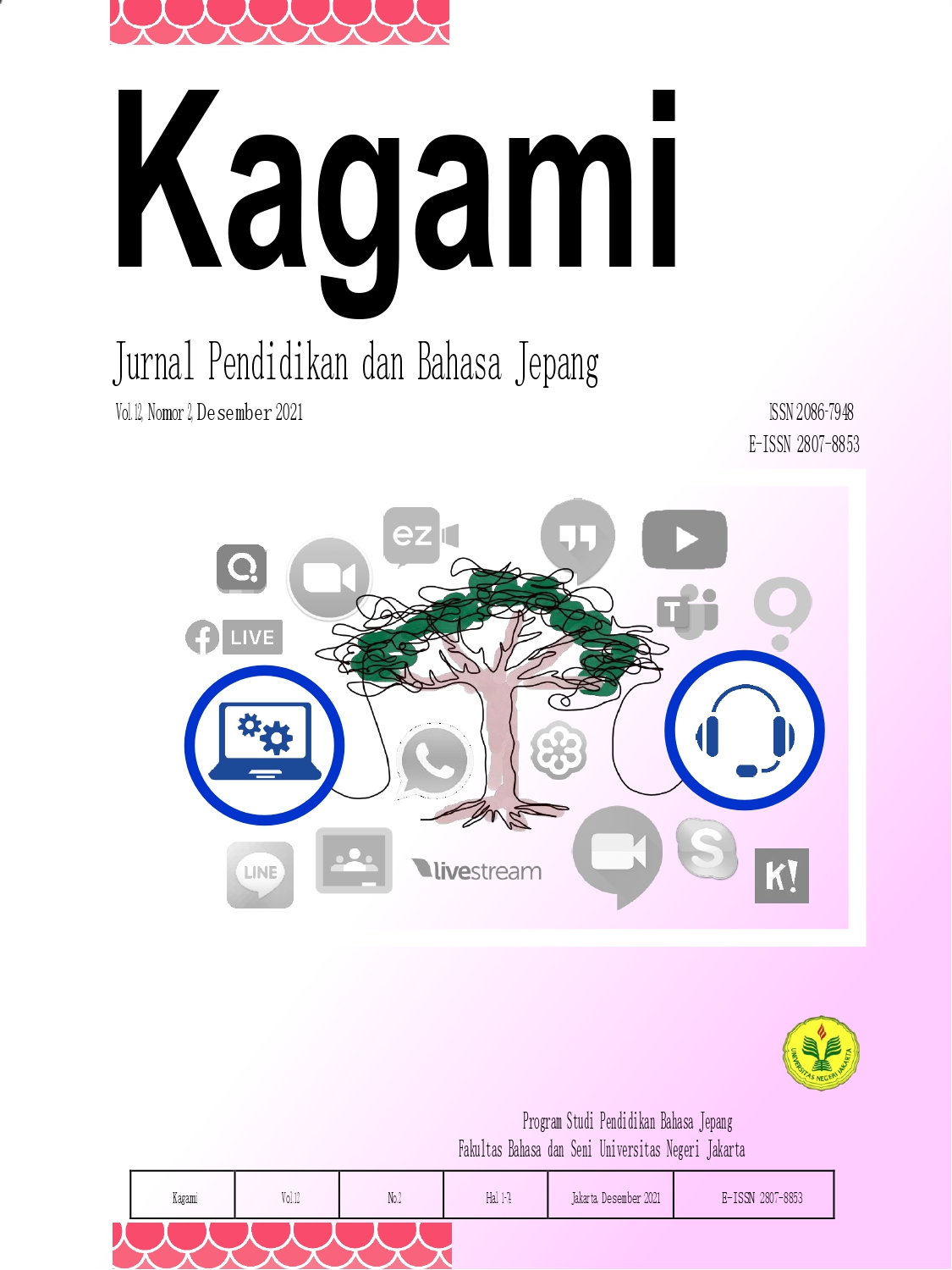Evaluasi Pembelajaran Keterampilan Menulis Bahasa Jepang Pemelajar Pemula
Keywords:
writing, coherence, thinking processAbstract
The purpose of this study was to evaluate the process of learning writing Japanese for novice learner. Stakeholders expect to hire graduates with skillful Japanese competence. Nevertheless, teaching writing has a lot of constrains due to the time availability, checking and giving feedbacks to learners. The focus of this research is to identify the problems in conducting writing classes, in the terms of teaching materials, allocation of time, feedback and revision. Evaluation was conducted based on the study on process approach and product approach and the learning models of writing. The result shows that teaching writing at this level accommodates both the process approach and the result approach. Writing activity may exercise grammar, but at the same time writing may exercise critical thinking, on how to deliver facts and thoughts. Conclusions and suggestions from this research, namely learning writing composition may start at the novice stage. Coordination with other language skills is advisory, especially in sharing similar topic in order to frequently use same vocabulary and sentence pattern. Therefore, writing session may focus on paragraph writing and coherency of composition.
References
Fun Japanese Learning. (2020). The 5 Biggest Genkouyoushi げんこうようしMistakes You Can Easily Avoid. https://www.youtube.com/watch?v=CZSlFWf9d70 diunduh 27 Oktober 2021.
Gabrielatos,C. (2002). EFL writing: product and process.
http://.www.gabrielatos.com/Writing.pdf diakses 27 Oktober 2021.
Kadowaki, Kaoru , Kaoru Nishiuma. (1999). Minna no Nihongo Shokyuu Yasashii Sakubun. Tokyo: 3A Network.
Kalipa, Zimkhitha. (2014). Teaching Strategies to Improve the Writing Skills for Grade 8 and 9 Learner in English First Additional Language: A Case Study of Four High Schools in the Cradock Education District (Thesis). University of Fort Hare.
Kroll,B. (2001). Consideration for teaching anESL/EFL writing course. In Teaching English as a second or foreign language, Marianne Celce-Murcia (ed.) 219-232. Boston: Heinle and Heinle
Nunan, D. (1999). Second Language Teaching and Learning. Boston: Heinle and Heinemann Publishers.
Nur Saadah, Fitri Asih. (2017). Model Materi Ajar Menulis Deskriptif dalam Bahasa Jepang Berbasis Pendekatan Proses – Penelitian dan Pengembangan Model Materi Ajar di Program Studi Pendidikan Bahasa Jepang FPS Universitas Negeri Jakarta. Japanedu Vol.2,No.2 (2017).
oksyourunbun. (2020). 【原稿用紙の使い方】添削するよ. https://www.youtube.com/watch?v=z5gyltW1kRA diakses 27 Oktober 2021.
Raimes, A. (1993. Techniques in teaching writing. Oxford: Oxford University Press. https://www.scirp.org/(S(i43dyn45teexjx455qlt3d2q))/reference/ReferencesPapers.aspx?ReferenceID=1788397 diakses 27 Oktober 2021
Rusmiyati, Rusmiyati. (2016). Peningkatan Kemampuan Menulis (Sakubun) Mahasiswa Bahasa Jepang Angkatan 2014 A Tahun Akademik 2015-2016 melalui Penerapan Kolaborasi Membaca-Menulis dengan Teknik Peer Reading. Jurnal ASA Vol. 3. 2016. https://journal.unesa.ac.id/index.php/asa/article/view/2544 diakses 27 Oktober 2021.
Steele,V. (2004). Product and process writing.
http://www.englishonline.org.cn/en/teachers/workshops/teaching-writing/teachingtips/product-process diakses 27 Oktober 2021.
Sugono, Dendy. (2014). Peran dan Kekuatan Bahasa Indonesia dalam Industri Kreatif Kebahasaan. Jakarta: Badan Pengembangan dan Pembinaan Bahasa Kementrian Pendidikan dan Kebudayaan.
Sutedi, Dedi. (2019). Evaluasi Hasil Belajar Bahasa Jepang (Teori dan Praktik). Bandung: UPI Press.





